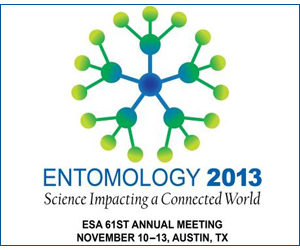ESA Eastern Branch Meeting Online Program
Temperature and floral abundance: biotic and abiotic determinants of pollinator activity in the mountain steppe of northern Mongolia
Sunday, March 17, 2013
Regency Ballroom (Eden Resort and Suites)
There are many sources of variation that may explain plant-pollinator interactions, including temporal variation and spatial variation. Additionally, there are biotic and abiotic ecological components, such as floral abundance and air temperature, respectively, that are also critical in determining pollinator activity. This study set out to investigate the variation in pollination at different time scales (i.e. throughout the summer and within a given day), and spatial variation (i.e. at two different locations). In the summer of 2011, we observed plant-pollinator interactions in the mountain steppe of northern Mongolia. There was significant variation in pollinator activity across the summer season and within the day, at both locations. But the drivers determining plant-pollinator interactions were different at the two locations, which were only 300 m apart. Path analysis showed that at Site A temperature played a large and significant role but floral abundance was not significant; whereas at Site B, temperature and floral abundance were approximately equal in determining plant-pollinator interactions. Given the recent surge of plant-pollinator studies that incorporate a global change perspective and use new methodological approaches, such as network analysis, these results demonstrate the importance of biotic and abiotic components as well as temporal and spatial variation when studying plant-pollinator interactions.


